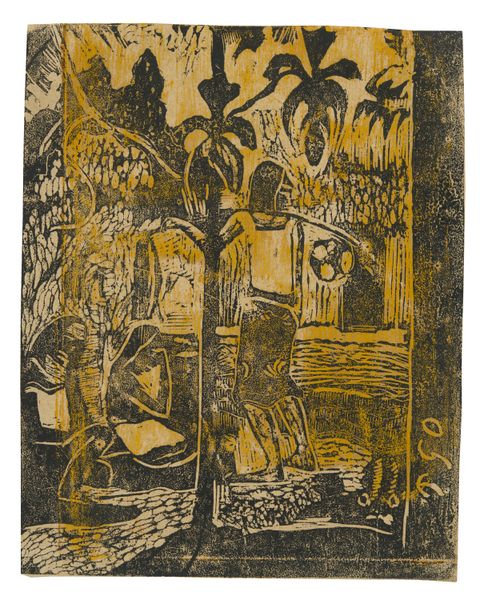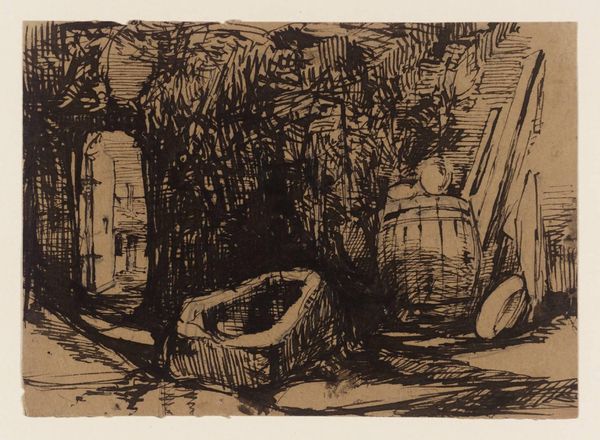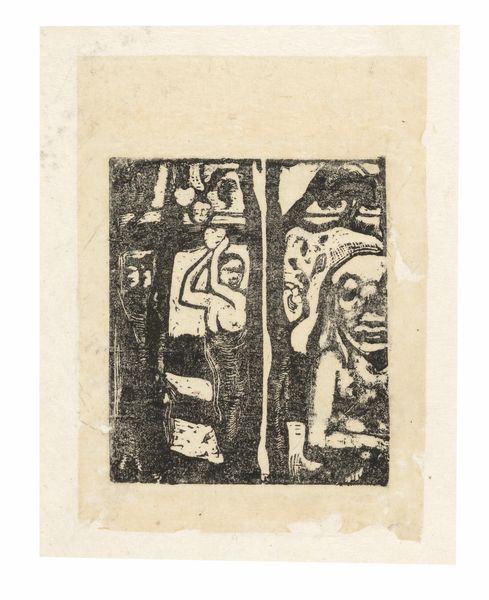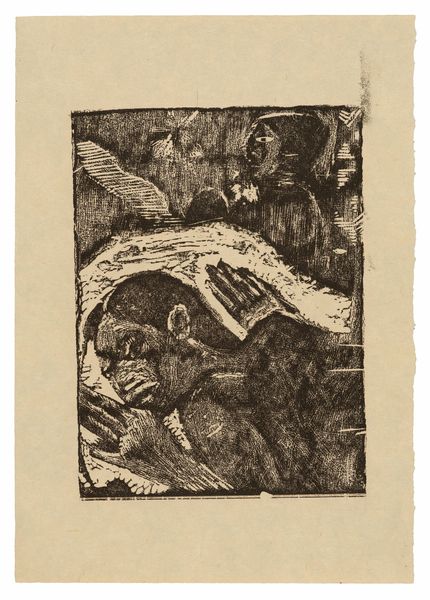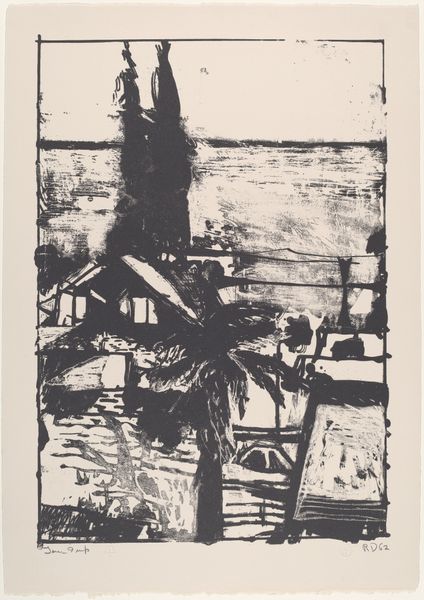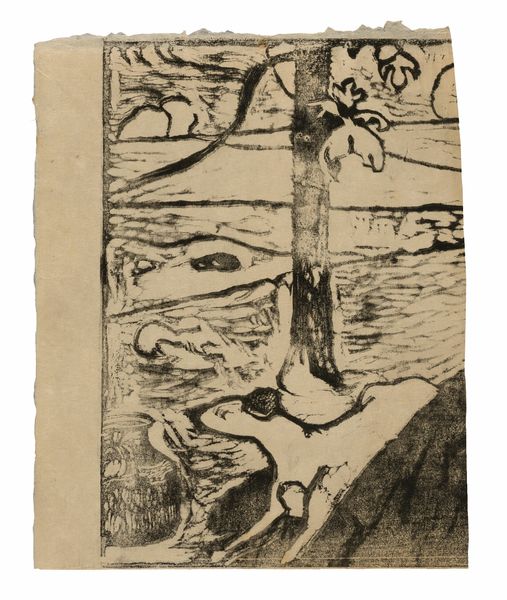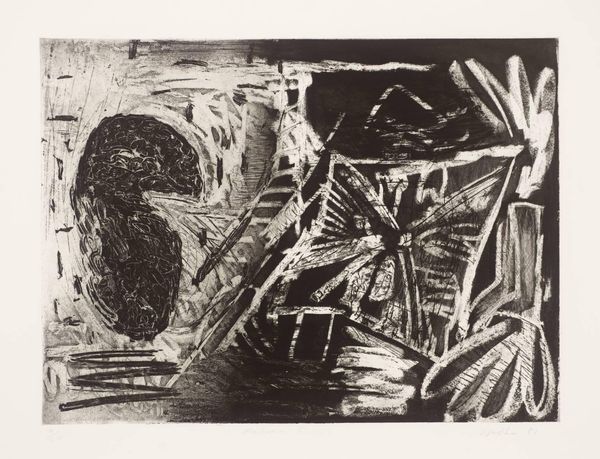
drawing, print, paper, woodcut
#
drawing
#
ink painting
#
linocut
# print
#
landscape
#
figuration
#
paper
#
linocut print
#
woodcut
#
symbolism
#
post-impressionism
Dimensions: 151 × 119 mm (image/sheet)
Copyright: Public Domain
Curator: Paul Gauguin's woodcut and linocut print, "Noa Noa (Fragrant)", created between 1894 and 1895, strikes me immediately as evocative. What is your impression? Editor: Dark. Brooding, almost. The thick black lines and swathes of inky shadow feel heavy. Yet, that yellowish beige seeping through softens it. There’s a tension here. Curator: Indeed. Gauguin made this after his first trip to Tahiti. But "Noa Noa" wasn't simply a visual record; it was deeply embedded in the colonial gaze. The images and text presented an exoticized, often inaccurate, account of Polynesian life, framed through a European lens. Editor: Ah, the title itself, "Noa Noa," promising fragrance... It sets an expectation, doesn’t it? It leads our eye, perhaps, but toward what symbols? I see the woman in the foreground, head bowed, perhaps in reflection, and another figure laden with fruit. They evoke cycles of nature, the bounty of the land. Curator: Yet there's an inherent power imbalance. The primitivism that Gauguin espoused, while seemingly celebrating Tahitian culture, conveniently ignored the harsh realities of colonialism and its devastating impact on the indigenous population. Editor: Consider the figures: stylized, almost iconic, and yet anonymous. They represent a type, rather than specific individuals. It's like the viewer is invited into a shared dream but filtered and mediated through a subjective vision, not unalike that of an explorer or missionary. Curator: It’s a visual echo of his complex personal and artistic journey. The layering of impressions mirroring the layered meanings that emerge when thinking about what has been forgotten and the people pushed into the background during this era. Editor: The textures achieved with wood and linoleum convey so much tactile information—almost an imprint of the land and people onto the paper. Curator: Ultimately, “Noa Noa” remains a difficult, though important work, filled with contradictions and historical baggage. Editor: Absolutely, a starting point. Its beauty and visual potency linger long after you look away and encourage looking at these symbols to continue seeing what they evoke.
Comments
No comments
Be the first to comment and join the conversation on the ultimate creative platform.
